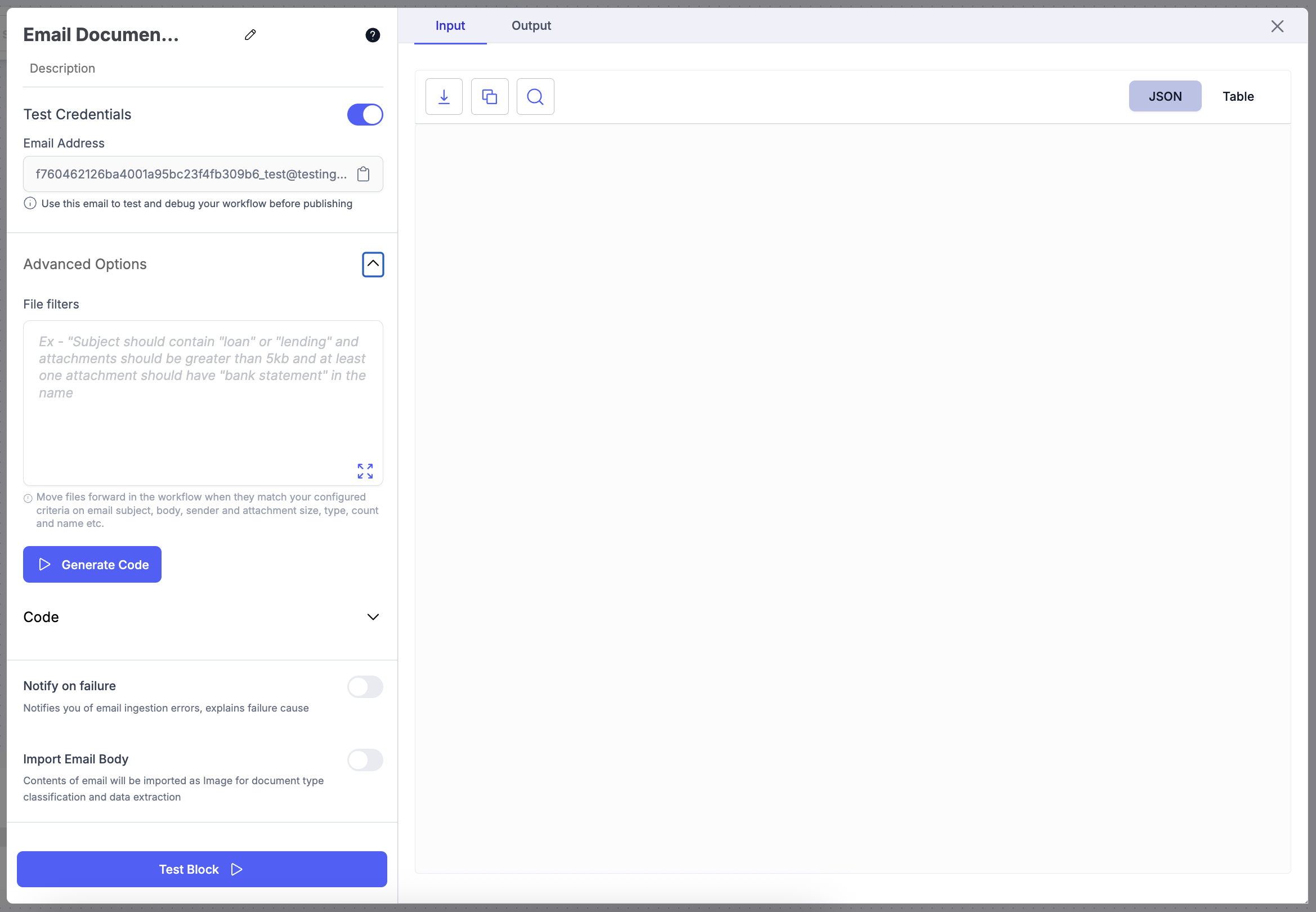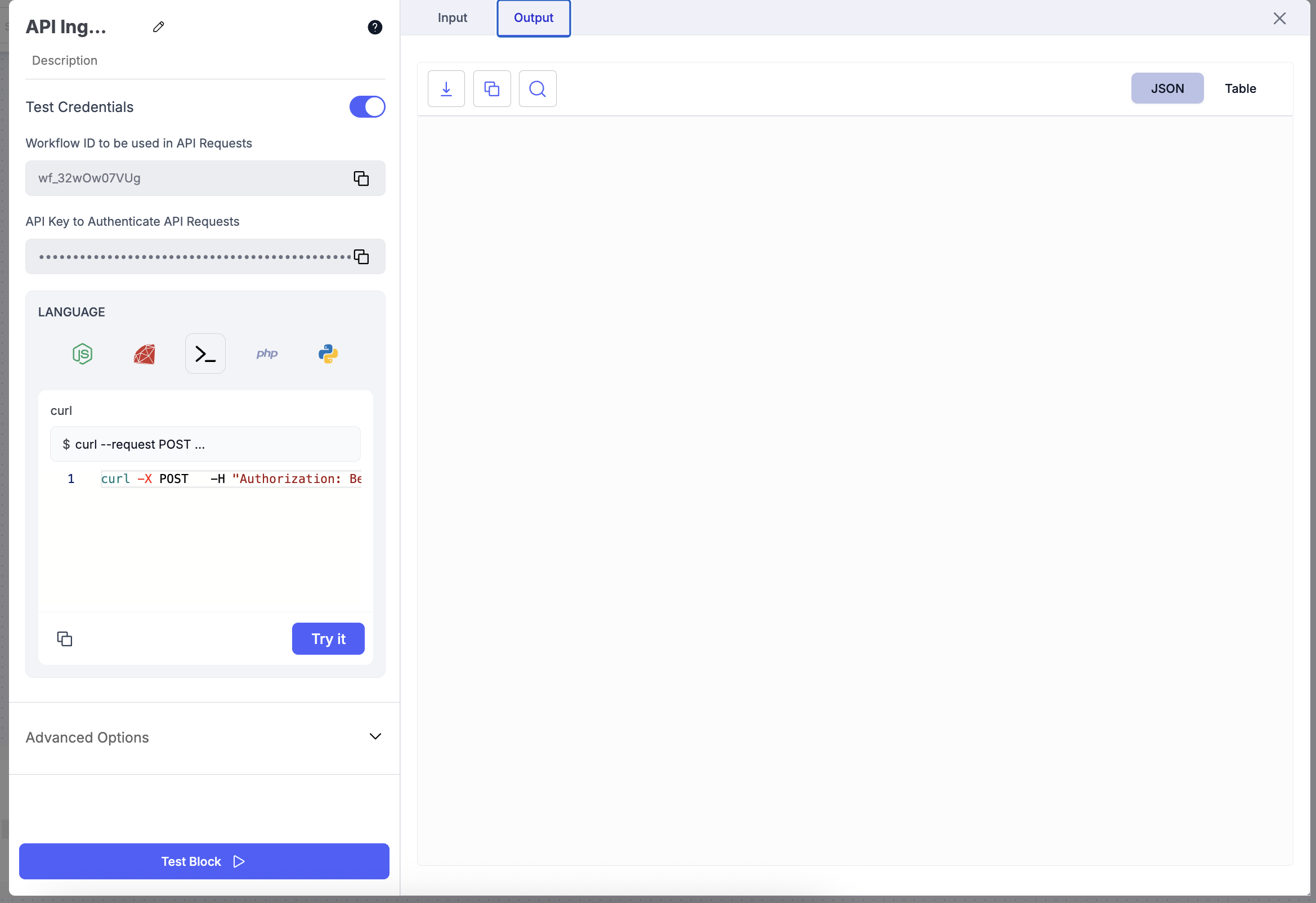Ingestion Blocks
Overview
Ingestion blocks are the entry points of a workflow. They define how documents or data enter the system — whether uploaded manually, sent via email, or ingested through an API.
| Block | Description | Typical Use Case |
|---|---|---|
| File Upload | Ingest documents via manual upload from the UI. | When users manually upload invoices, bank statements, or identity documents for processing. |
| Email Document Upload | Ingest attachments from incoming emails automatically. | For setups where users or clients forward documents to a dedicated address (e.g., [email protected]). |
| API Ingestion | Ingest documents and data via REST API calls. | For integrations where systems like CRMs, ERPs, or partner platforms send documents automatically. |
Configuring Ingestion Blocks
Below are the available configuration options for each ingestion block and their typical usage.
File Upload Block

Configuration Steps:
- Upload Method: Drag and drop files directly, or click “Upload” to browse from your system.
- Advanced Options: Configure optional pre-processing logic (if applicable).
- Testing: Click “Test Block” to validate upload.
Email Document Upload Block

Configuration Steps:
- Test Credentials: Enable toggle to use a test email address for test run.
- Email Address:
- Copy the auto-generated test email.
- Use this address to forward documents for workflow testing.
- Advanced Options:
- File Filters: Define conditions for which emails to process — for example:
Subject should contain "invoice" and attachments should be greater than 5kb - Notify on Failure: Enable toggle to receive alerts for failed email ingestion.
- Import Email Body: Enable toggle to import email body
- File Filters: Define conditions for which emails to process — for example:
- Testing: Click “Test Block” to simulate email-based ingestion before publishing.
API Ingestion Block

Configuration Steps:
- Test Credentials: Enable test mode for API testing.
- Workflow ID: Automatically generated ID to reference this workflow in API calls.
- API Key: Required for authenticating requests.
- Code Snippets: Copy ready-made examples for multiple SDKs:
- cURL, Python, Node.js, Ruby, PHP
- Testing: Click “Test Block” to confirm connectivity and response format in the output tab.
Best Practices
- Use File Upload during testing or small-scale manual workflows.
- Use Email Upload for semi-automated setups or where clients send data frequently.
- Use API Ingestion for high-volume or system-to-system integrations.
- Always test ingestion blocks individually before chaining them to extraction or transform blocks.
Updated about 1 month ago
